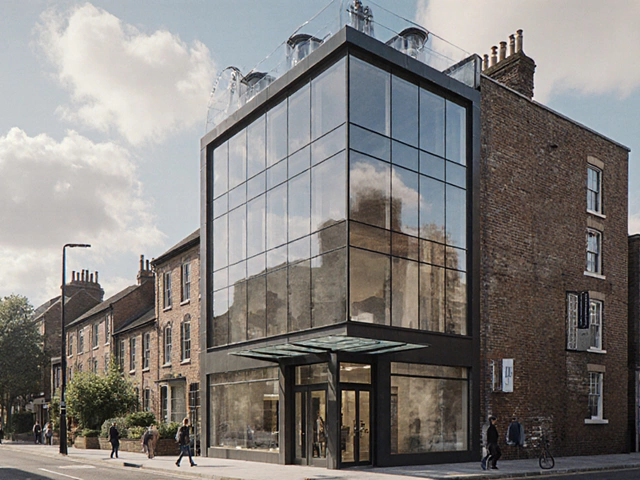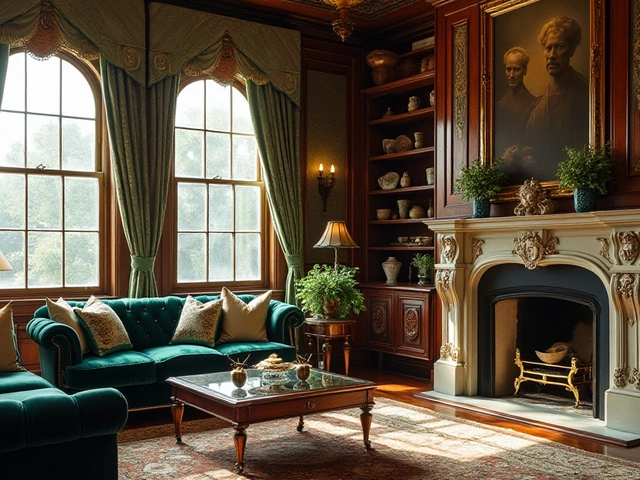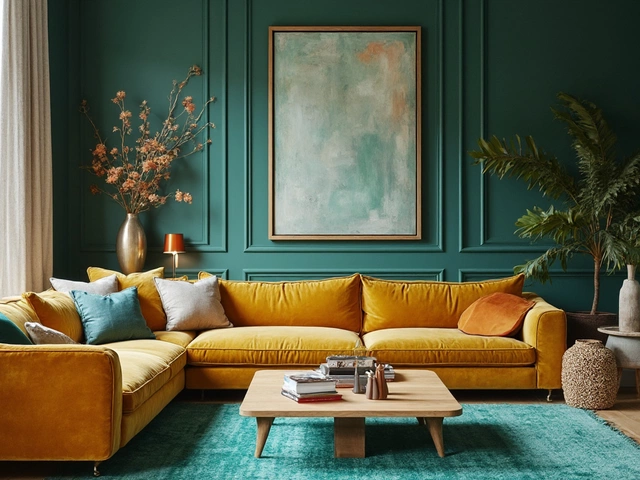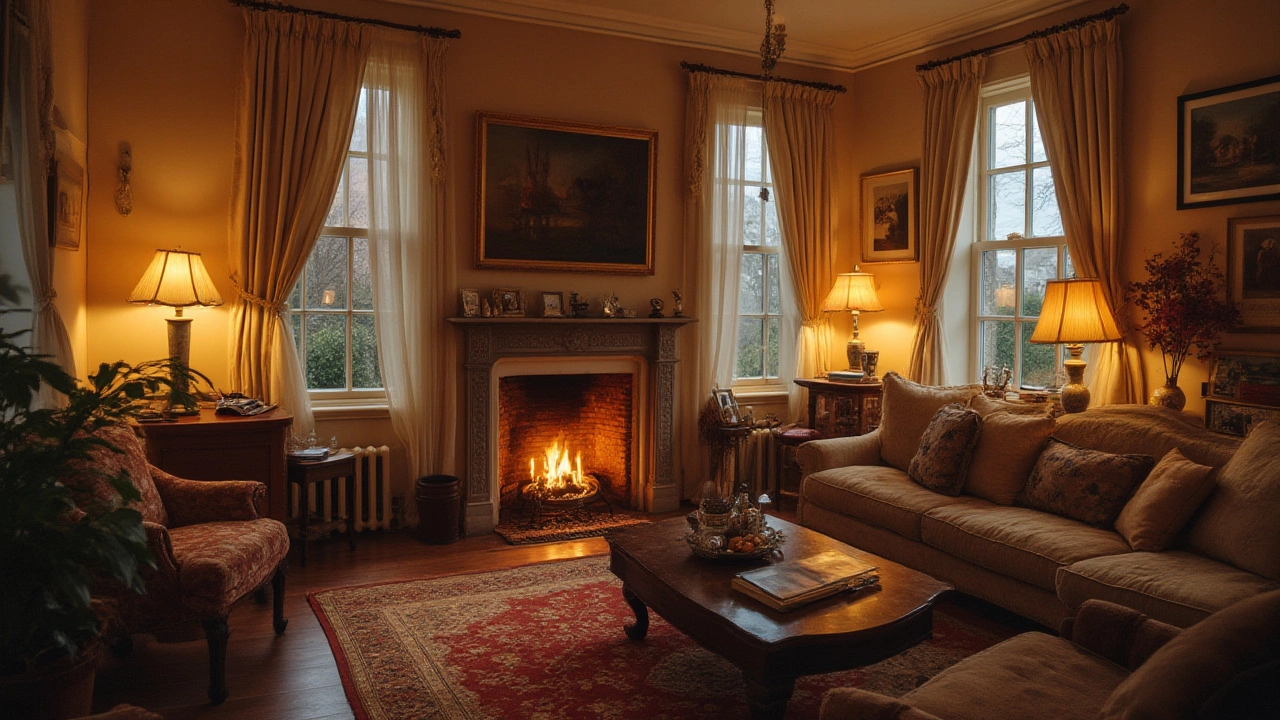
Ever noticed how one room in your house always feels weirdly cold, or how dinner looks extra bland under certain bulbs? Light does more to your daily life than you probably think—itch your brain in strange ways, make your eyes work overtime, flatten colors, and even mess with your sleep. Forget fancy gadgets for a minute; the humble lightbulb might be your home’s most powerful secret weapon. Let’s break down what makes good lighting and how the right bulb, the right temperature, and the right placement can make or break your space.
Understanding Light Bulb Types and Color Temperatures
There’s an arms race happening on store shelves—a dizzying lineup of LED, CFL, halogen, and the grandfather of them all, the incandescent bulb. Each has its own quirks. The classic incandescent, your standard yellow glow for nearly a century, is warm but wildly inefficient. A 60-watt incandescent gobbles up energy nearly ten times faster than an equivalent LED. Halogen’s a bit better but still a fossil. Compact fluorescents (CFLs) were the future for a hot minute, using less power, but folks hated their harsh color and slow warm-up. Then came the LED revolution. The best ones last for years (we’re talking a decade or more), barely sip energy, and come in every shade you can imagine.
You’ll see bulbs rated by color temperature, measured in Kelvin (K). Think of it like this: A lower number means cozier and yellower—2,700K feels like sunlight drifting through your grandma’s curtains. Head up to 4,000-5,000K, and you’re getting closer to surgical white: super crisp, but can make a kitchen feel sterile if you go too far. Most people land somewhere in between. The sweet spot? Bedrooms, living rooms, and anywhere you want to relax do best at 2,500-3,000K. Offices, kitchens, laundry rooms—places where you want energy, not nap vibes—take 3,500-4,500K. If you want your tomatoes to look brutally honest, crank it past 5,000K. Just know it might give your neighbors ‘dentist’s waiting room’ moods.
Wattage used to be the big headline, but that’s old school. Focus on lumens—a measure of brightness. For reading or kitchen prep, 700–950 lumens per bulb is plenty. General mood or accent lighting? 450 lumens often does the trick. The bonus with LEDs: dimmable models play nice with most switches, letting you fine-tune the mood from movie night dim to morning sunshine bright.
If you’re feeling nerdy, take a look at the color rendering index (CRI). A CRI over 80 means colors look accurate; above 90 is basically daylight in a bulb. Cheap bulbs can make reds look washed out and greens murky, which is why that steak sometimes turns a weird gray in the wrong light — not exactly appetizing.
Here’s a quick cheat sheet for bulb types, brightness, and longevity:
| Type | Avg. Lifespan (hours) | Watts (for 800 lumens) | Notes |
|---|---|---|---|
| Incandescent | 1,000 | 60 | Warm, inefficient, phased out in many regions |
| CFL | 10,000 | 13–15 | Cooler light, may contain small amounts of mercury |
| LED | 25,000–50,000 | 8–10 | Wide range of colors, energy saver, best longevity |
| Halogen | 2,000 | 43 | Brighter than incandescent, but runs hot |
Choosing the right lighting comes down to picking your color temperature, lumen output, and type. Usually, the smartest move is modern LEDs. They’re flexible, easy on your wallet, and simple to recycle.
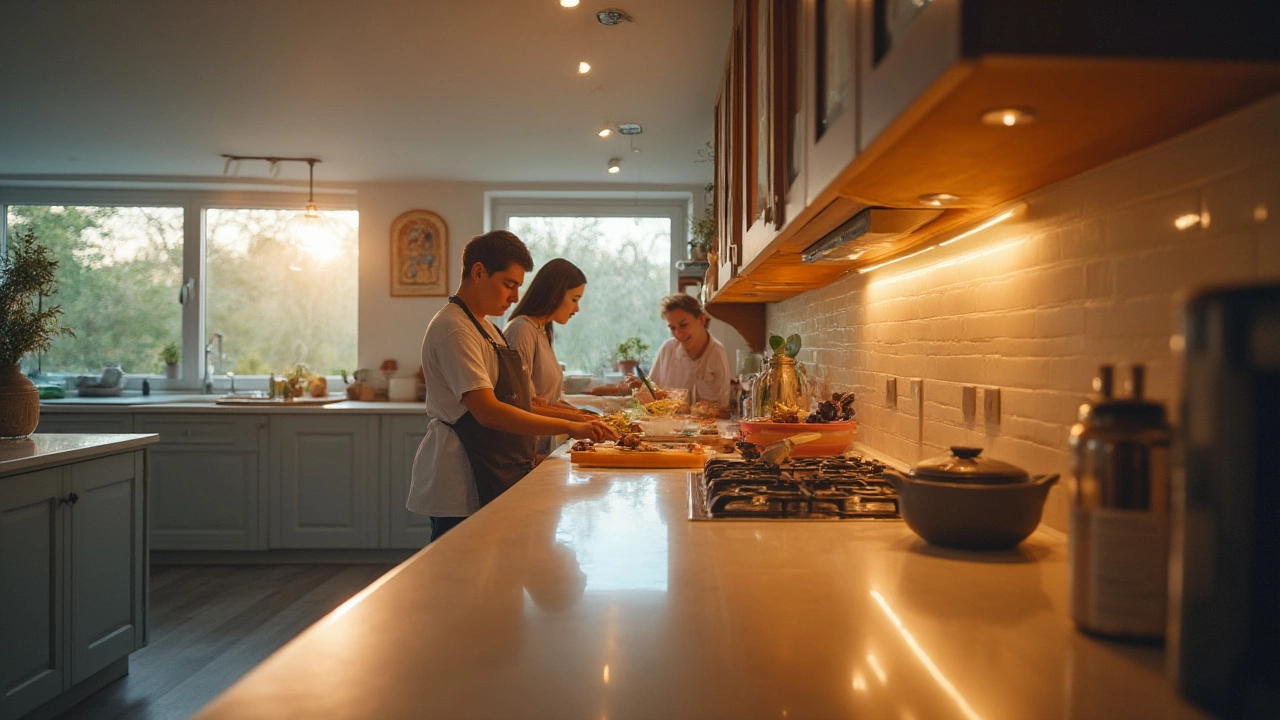
Room-By-Room Lighting Tips: What Works Where
Now for the real-life side: not every light fits every room. If you’ve ever gotten a blinding wake-up call from a harsh bathroom light at midnight, you get it. Let’s walk through the house. Start with the kitchen—where tasks rule. You want focused, shadow-free light over counters and cooking spots, with a ‘neutral white’ color (3,500–4,000K). Under-cabinet LED strips have been a game-changer for seeing where you put the microplane or your kid’s science project leftovers. Big pendant fixtures over islands are both eye-candy and practical—just look for adjustable ones so you don’t beam people straight in the face when someone tall walks by.
The living room’s a multitasker: marathons, reading, playtime. Layer different bulbs—a central fixture for general light, floor lamps beside the couch for reading (aim for 400–800 lumens each), and maybe some clever LED tape tucked behind your TV. That low-glow can reduce eye strain on movie nights. Soft white (2,700–3,000K) is your mood-maker; steer clear of icy blue bulbs. For accent lighting—think art, bookcases, or weird little nooks—low-watt LEDs do the trick.
Bedrooms are all about winding down. Harsh, overhead lights are the enemy of good sleep, especially for kids like my own Gideon—who, when he finally crashes, needs gentle vibes, not police-interrogation chic. Stick with bedside lamps or wall sconces, and try warm bulbs (no more than 3,000K). Try bulbs with a dimmable feature if you’re fighting over who gets to turn the main switch off (pro tip: smart bulbs let you do this from your phone, which is magic when you’re stuck under a sleeping toddler).
Bathroom lighting’s trickier than it gets credit for. Overhead is useful for general stuff, but face-level lights or sconces around your mirror win for shaving and makeup—just keep color temp neutral, around 4,000K, for the most honest feedback. Nobody needs the shock of a ghostly face at sunrise. If you want to treat yourself, install a dimming feature for midnight visits—your eyes will thank you.
Home offices and study spots are best with cool white (at least 4,000K), which perks up your brain without the caffeine crash. Position desk lamps so they fall across your workspace without glare on your screens. And if your kids do homework at the kitchen table (like my son does, usually surrounded by cookie crumbs), under-cabinet lighting pulls double duty for cleaning and studying.
Let’s not ignore the overlooked: hallways, closets, and laundry rooms. People slap the harshest bulbs here, but you don’t have to go full interrogation. Bright LEDs help you catch stray socks and, crucially, aren’t a burn-out hazard when left on forever by accident (looking at you, Gideon).
- For open floor plans, try smart bulbs with scenes—morning routines brighter, dinner dimmer.
- Use timers and motion sensors in utility and entry spaces.
- Layer lights (overhead, table lamp, accent) for flexibility. You want to control both intensity and mood.
- If you have pets or small children, opt for shatterproof bulbs. LEDs are not just efficient—they’re safer.
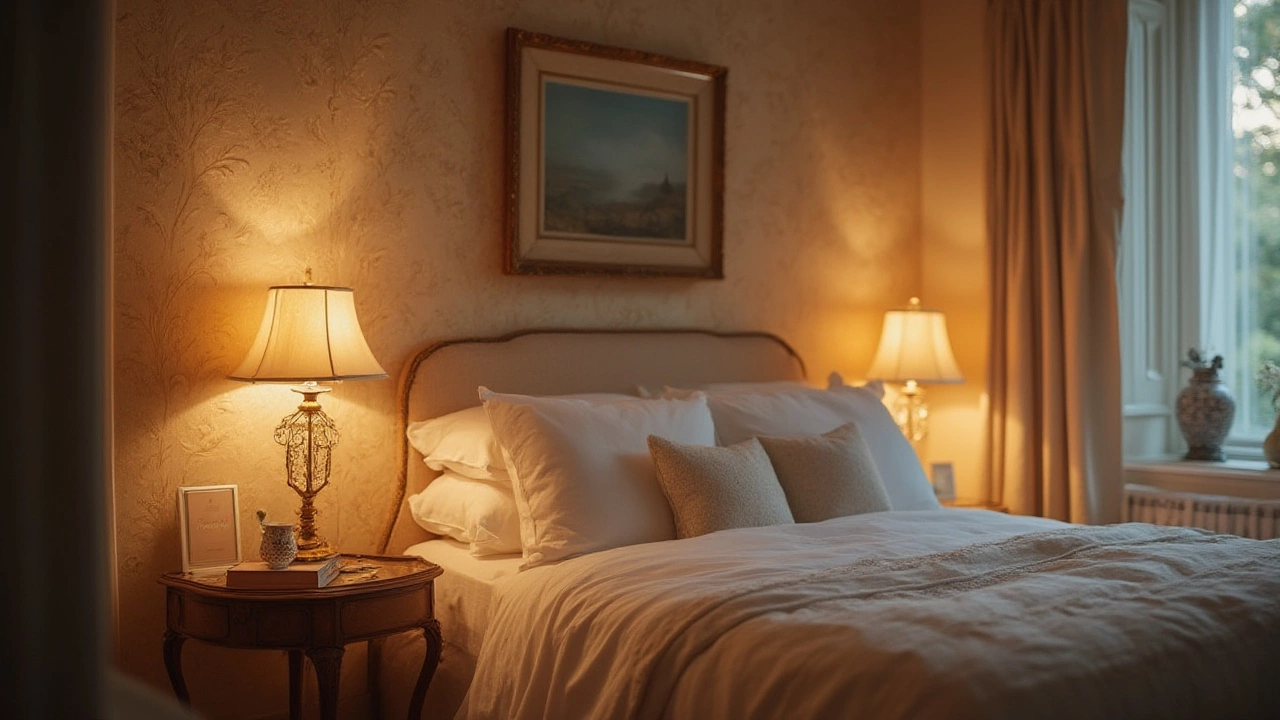
Healthy Lighting: Beyond Style and Savings
Talk about lighting, and you can’t skip the health side. Bad lighting cooks your circadian rhythm, tweaks your sleep, and can muddle up moods—especially in those winter months. The thing is, our bodies take cues from the light around us. Cozy, dimmed lights help tell your brain it’s time to slow down. Brighter, cooler lights signal ‘get moving!’ The wrong choice—like blue-heavy bulbs in your bedroom—can leave you staring at the ceiling at 2am, no matter how many sheep you try counting.
Did you know: people who get more natural daylight at home report sleeping better and feeling more alert? If you’re short on windows, mimic daylight with high CRI LEDs in main spaces during the day and then switch to warmer tones in the evening. Try using smart systems, which automatically shift your bulbs’ color temp as the day winds down. It’s like hacking your body clock from your phone.
Too few people think about glare. Whether it’s a shiny desk, a glossy kitchen backsplash, or even a patterned tile in the bathroom, coolly calculating bulb position makes a massive difference. Aim bulbs away from screens, glass, or directly into eyes—a little angling goes a long way. For those working from home, or for kids glued to tablets like my own son, you want indirect, diffuse light to keep headaches (and squinting) at bay.
Got plants? They don’t love old-fashioned bulbs. Full-spectrum or “grow” LEDs help your fiddle leaf fig thrive, and look way less weird than clipping a metal shop light to the windowsill. And if you live where winter is endless, consider a small therapy lamp that mimics sunshine for your mental health.
All these adjustments aren’t just style points—they really change how the home feels for everyone living there. Smarter lighting also saves real cash: according to the US Department of Energy, shifting most of your home to LED can cut your lighting bill by at least 75%. The average US household spends around $200 yearly on lighting. That means switching bulbs frees up enough for a few good dinners out, or, if you have kids, a fraction of that museum pass you’ll end up using on rainy weekends.
Quick tip: if you rent and can’t re-wire, swap out bulbs and use smart plugs for cheap, instant upgrades. And if you’re planning renovations, loop in your electrician early—adding dimmers, putting outlets in clever places, or tucking away cable mess can make your life a lot easier down the road.
Lighting isn’t decoration—it’s the backbone of how your space feels, works, and, honestly, how happy everyone is inside it. Choose the right bulbs for each space, layer them smartly, and your home gets that magic, just-right vibe. Your eyes, your mood, and even your power bill will thank you for it.
